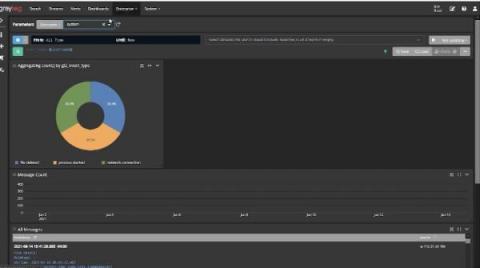Operations | Monitoring | ITSM | DevOps | Cloud
Logging
The latest News and Information on Log Management, Log Analytics and related technologies.
How to manage log files using logrotate
Logs are records of system events and activities that provide valuable information used to support a wide range of administrative tasks—from analyzing application performance and debugging system errors to investigating security and compliance issues. Large-scale production environments emit enormous quantities of logs, which can make them more challenging to manage and introduces the risk of losing important data if underlying resources run out of space.
Go On, Git(Ops)
Imagine a workflow where you change and test all of your configurations in the “development” environment, committing those changes along the way, and then when you’re happy with the changes, you bundle them together in a single “pull request”, and the changes, after being reviewed by your peer(s), get pushed into production.
How to Setup AWS CloudWatch Agent Using AWS Systems Manager
Before we jump into this, it’s important to note that older names, and still in use in some areas of AWS, are often referred to SSM which stands for Simple Systems Manager. AWS Systems Manager is designed to be a control panel for your AWS resources so you can manage them externally without having to SSH into the resources individually. What is important to remember with AWS Systems Manager is that features contained within the tool may occur additional pricing.
Using Log Management for Compliance
It’s that time of the year again. The annual and dreaded IT and security audit is ramping up. You just received the documentation list and need to pull everything together. You have too much real work to do, but you need to prove your compliance posture to this outsider. Using log management for compliance monitoring and documentation can make audits less stressful and time-consuming.
Logs monitoring with mtail
As of today, Bleemeo is not ingesting logs file, but you can use some external tool to ingest logs metrics which should be pretty useful as it will help you to identify issues and trigger an alarm. You will still have to connect to the machine to check logs, but trends and alarms are centralized in your favorite monitoring tool.
Logz.io Now Fully PromQL Compatible
The popularity of Prometheus speaks for itself. The project doesn’t post official numbers, but there are at least 500,000 companies using this project today as one of the most mature CNCF projects – one that has over 40k Github stars as of the writing of this blog. And since Prometheus is highly interoperable, compatibility is key. This comes into play not only with the exporters, but also with long-term storage options and alerting systems.
Sematext recognized as one of the Best Software Products by G2 and Gartner review platform communities
At Sematext, we are dedicated to making troubleshooting easier for ops teams. We knew we were doing something right when we started to receive awards and positive reviews from our customers around the globe, ranging from startups to enterprise clients across a wide range of industries. In this post, we’re listing just a few of the recognitions Sematext Cloud has received from the community via review platforms such as G2, Capterra, GetApp or SoftwareAdvice.
New in Grafana 8.4: How to use full-range log volume histograms with Grafana Loki
In the freshly released Grafana 8.4, we’ve enabled the full-range log volume histogram for the Grafana Loki data source by default. Previously, the histogram would only show the values over whatever time range the first 1,000 returned lines fell within. Now those using Explore to query Grafana Loki will see a histogram that reflects the distribution of log lines over their selected time range.
Banks are enabling personalization with Elastic - your industry can, too
Think about the moments when something is presented to you that is just what you’re looking for. Those moments, when it feels like a company you trust knows you, are all too rare in commerce. And of course, presented incorrectly, they can even feel invasive. But done well, they solidify your relationship as a customer, and reinforce that you’re getting the service you deserve.











